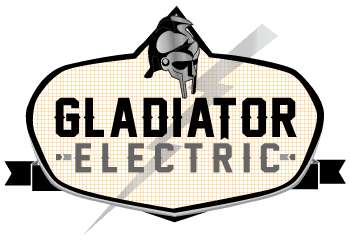What is the cost of upgrading my office lighting?
Lighting is crucial in any workspace, impacting employees’ overall mood and well-being.
Inadequate lighting results in many health concerns, including eyestrain, headaches, and fatigue; it can even affect employee concentration levels.
Upgrading your office lighting not only improves the visual appeal of your space but also has several perks, including energy savings and cost reduction. But before we discuss the factors that affect the cost of an office lighting upgrade, let’s first understand the different lighting options available.
Types of Lighting
The three main lighting types are ambient, task, and accent.
- Ambient lighting: provides overall illumination to a room or space. Overhead lights or chandeliers are the most prevalent examples, and the objective of having this type of light in an office setting is to improve visibility.
- Task lighting; as the name implies, task lighting aids in varied and highly specific tasks, i.e., reading or working on a computer. It helps reduce eye strain by providing targeted brightness where it’s needed. Offices with separate desks and workstations often use task lighting.
- Accent lighting: creates a visual interest in a room or highlights specific areas. This light adds depth to the office space, projecting a more conspicuous or pronounced design. You often see accent lighting in an office setting to showcase artwork or highlight or brighten a dark corner.
What Determines the Cost of an Office Lighting Upgrade?
1 – Type of Lighting
Choosing between ambient, task, or accent lighting will affect the overall cost of an office lighting upgrade.
Ambient lighting, the primary illumination source, often requires many fixtures and high-output bulbs. The cost is largely determined by the choice of fixtures and the size of the space. Likewise, the electrical work needed to install new fixtures can also add to the cost. While initially more expensive, LED lights will offer better energy savings over time.
Task lighting is often less expensive as it involves fewer light fixtures and lower output bulbs. But then again, task lighting requires careful placement to ensure that light is provided precisely where needed, ultimately adding to the installation cost.
Meanwhile, the cost of accent lighting will depend on the specific purpose. If it’s used to highlight design features or artwork, high-quality fixtures and bulbs may be required, increasing the cost. However, less expensive options may be available if it’s just to add depth or create a certain mood.
2 – Size of the Space
The size of the office space is another determinant of the cost when upgrading your office lighting. Naturally, a larger area will require more light fixtures for proper illumination. This directly impacts the cost of materials, including the number of light fixtures and the quantity and types of bulbs required.
Also, larger spaces might necessitate a more complex electrical setup that can accommodate the increased number of fixtures and bulbs, potentially adding to labor costs and installation time.
If the space’s design is intricate or challenging, it may call for specialized fixtures or unique lighting solutions, which could also affect the overall cost. It’s also worth noting that while a larger space may entail higher upfront costs for a lighting upgrade, long-term energy savings, especially when using energy-efficient solutions like LED lighting, will ultimately offset these initial expenses.
3 – Retrofitting vs. Complete Replacement
When considering an office lighting upgrade, you could retrofit or replace the existing fixtures with new ones. Retrofitting is often a more cost-effective option as it only requires upgrading the components of the current lighting system, i.e., bulbs and ballasts. It also usually involves less labor and minimal changes to existing wiring.
However, the practicality of retrofitting over complete replacement isn’t just about cost. It also centers on the condition of the current lighting fixtures. Retrofitting could be the best option if the fixtures are relatively new and in good condition. It’s less disruptive for the office workflow, requiring less time than a complete overhaul.
If the existing fixtures are outdated or in poor condition, a full replacement could be more cost-effective in the long run. While the initial investment will be higher, new fixtures often have better energy efficiency and longevity, leading to significant savings on energy bills and maintenance costs over time.
When deciding to retrofit or replace, it’s imperative that you first conduct a thorough cost-benefit analysis, considering both immediate expenses and future savings.
4 – Energy Efficiency
Putting a premium on energy efficiency suggests that the long-term savings from an office lighting upgrade will eventually offset the upfront costs. Choosing energy-efficient solutions like LED lights not only cuts down on your energy bills but also helps reduce your business’s carbon footprint, contributing to sustainable practices and corporate social responsibility initiatives.
Energy-efficient lighting solutions are designed to last much longer than traditional bulbs, resulting in less frequent replacements and maintenance work. They also consume less power, which translates to lower energy bills.
Offices typically operate for extended hours, with lights being one of the most used utilities. As such, lighting solutions are expected to be reliable and efficient for prolonged use. Energy-efficient lighting solutions will outdo traditional lighting fixtures in their longevity. With hours of continued use daily, less energy-efficient lights wear out faster and require frequent replacement, corresponding to higher maintenance costs.
LED lights, a common example of energy-efficient lighting, have a lifespan of up to 50,000 hours, compared to the 1,000 hours of conventional incandescent bulbs. The longer lifespan leads to fewer bulb replacements, reducing maintenance costs and the resources required for light fittings. This longevity means there’s a more consistent lighting solution for the office environment. Frequent bulb changes will lead to slight differences in the quality of light over time – an issue far less prominent with longer-lasting, energy-efficient solutions.
5 – Labor Cost
This labor cost usually depends on the complexity of the upgrade and the electrician’s or contractor’s hourly rates. You expect it to be lower for simpler tasks, like replacing bulbs. However, the labor cost will be higher if the upgrade involves intricate wiring or the installation of new fixtures.
If the upgrade requires specialist knowledge or certification – for instance, for installations in high, hard-to-reach places or for dealing with potentially hazardous materials – you expect it to increase the cost. Getting multiple quotes from different contractors makes perfect sense if you hope for a fair price.
Ultimately, upgrading your office lighting encompasses more than just a visual transformation. Doing so will affect everything from the ambience to energy efficiency and, perhaps most importantly, overall productivity.
The upfront cost will indeed turn most office managers off, but when performed right, an office lighting upgrade pays for itself in the long run.
If you need to upgrade the lighting in your office, give Gladiator Electric a call.
Mike has been in the industry since 2000 and is the owner of Gladiator Electric. After working for local Bergen County established electrical contractors and completing a 5 year state-sanctioned apprenticeship program, Mike become a foreman for a large company where he remained for over a decade. As an accomplished Martial artist in Brazilian jiu jitsu , Muay Thai & boxing Mike has learned focus, tolerance, fairness, humbleness, discipline and personal growth.




Recent Comments